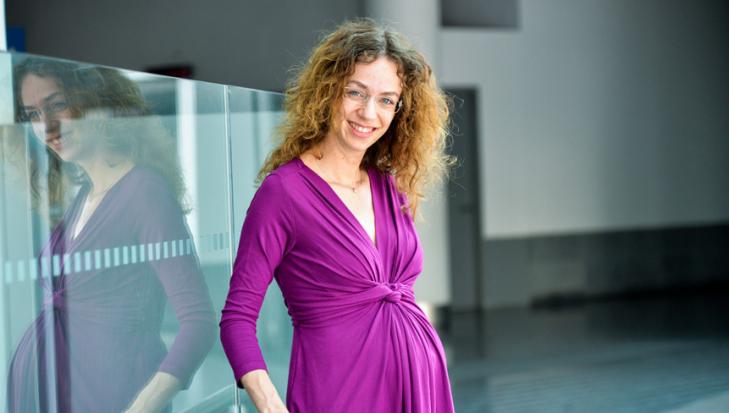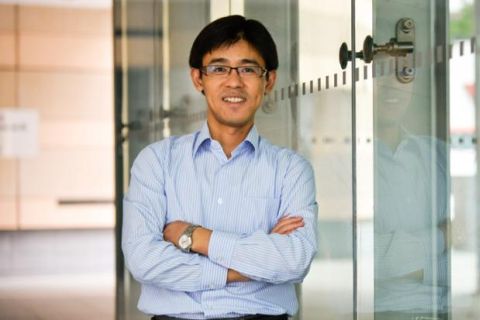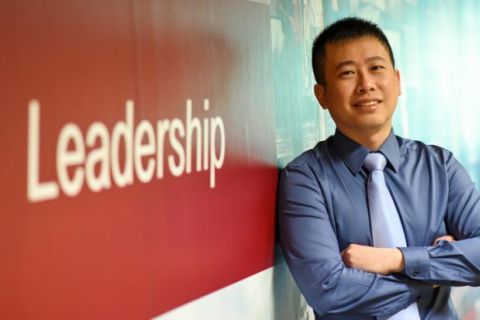
A country’s constitution protects the rights of its citizens. But who protects the constitution? SMU Assistant Professor Maartje de Visser looks to answer this question.

Photo Credit: Cyril Ng
By Yamini Chinnuswamy
SMU Office of Research – Constitutions are in effect instruction manuals for countries, laying out the fundamental principles that determine how a nation is governed. But who are the auditors of such constitutions to ensure that they continue to work for the best interests of the state? Assistant Professor Maartje de Visser from the Singapore Management University (SMU) School of Law studies the various ways that countries approach the protection of their constitutions.
It is common for nations to set up a special constitutional court, whose key function is to rule on whether existing laws interfere with the established rights and freedom of the country’s citizens. Professor de Visser notes, for instance, that in South Africa, it was the constitutional court that abolished capital punishment in 1995. In this landmark decision, the judges mentioned a similar decision by the constitutional court in Hungary to declare the death penalty unconstitutional.
“Such a practice of referring to how other countries have tackled conflicts in their constitutions may be helpful in difficult cases and also for younger constitutional courts,” she explains. “After all, learning what other courts are doing can lead them to making better, more informed decisions about important state matters.”
Constitutional review in Europe
In 2014, Professor de Visser completed her book Constitutional Review in Europe – A Comparative Analysis, which studied constitutional review systems in 10 European states including France, Germany and the United Kingdom (UK).
One of the challenges she faced in the course of her four-year effort – which was part of a larger research project – was nailing down the nuances of each system and ensuring that each country was accurately represented.
“As I was unfamiliar with all these countries, the other researchers and I benefitted from the expertise of a taskforce that comprised members from the different countries under study,” she says. “We had annual meetings where I shared my findings up to that point, so as to confirm if I had correctly presented the existing laws and sentiments of each country.”
According to her, a key purpose of the book is to shed light on systems that do not primarily use courts to uphold constitutional values. “It is potentially detrimental for a country to think that whenever there are concerns about the respect shown for its constitution, it can simply turn to the judges for an answer.”
“There are countries which do not rely on courts in this regard. For instance, the UK has successfully entrusted responsibility for protecting core constitutional principles to a special parliamentary committee,” adds Professor de Visser. “More importantly, even in countries that have constitutional courts, other actors such as civil society and legislatures must still accept responsibility for guarding and protecting the constitution.”
A vigilant approach to protecting national constitutions is of particular relevance to Asia, she says. “Constitutional democracies in this region are generally not as mature as those found in Europe or the United States. As such, assuming that courts can single-handedly ensure that the constitution and underlying values will be respected as the supreme law of the land is naïve and even dangerous.”
Constitutional review: the Asian context
Professor de Visser is currently expanding her research on constitutional courts to Asia. Referring to the Association of Asian Constitutional Courts and Equivalent Institutions (AACCEI) that was established a few years ago by a number of constitutional courts in the region, she notes, “They realised that creating a platform for cooperation would be beneficial for all as they are all committed to contributing to the realisation of the rule of law, democracy and protecting the fundamental rights granted to citizens.”
For example, one activity carried out by judicial networks such as the AACCEI is the organisation of periodic meetings where participating judges can share ideas and exchange best practices. Though laudable, this practice is not without controversy. “If a constitution is meant to reflect a society’s values and beliefs, that society may not want their constitutional court to be influenced by, let alone ‘import’ ideas from another country.”
Navigating such objections will be important given that most of the constitutional courts in Asia are relatively young institutions. “Most of these courts are still in the process of building their own body of case law that they can rely on in future decisions. Even without extensive regional integration, they may thus be motivated to look to other courts for inspiration in their struggle to establish their place within the wider legal and political system,” she comments.
Asian constitutional courts also face another challenge in the pursuit of deepening pan-Asian cooperation: language barriers. This is an issue Professor de Visser has experienced firsthand. “Some courts have yet to publish their decisions in the English language, and this hinders the effective exchange of information.”
The advent of regional integration
Studying the work of the AACCEI also relates to Professor de Visser’s other interest in the topic of regional integration.
“Although ASEAN was founded in 1967, the integration process has only sped up of late. But if we are moving towards closer ties among the ASEAN states, we need to know exactly what steps to take and what the potential implications are,” she says. “Countries do not necessarily agree on the end goal(s) of integration, or how these are to be achieved, and ensuring the correct implementation and proper application of transnational rules in each of the ASEAN member states is also no easy matter.”
“How does cooperation among Asian nations work in practice and how can it be made to work better? These are questions that even established regional international organisations such as the European Union continue to struggle with and there is every reason to expect that ASEAN member states will be confronted with these issues too. Thus, there is ample scope for more research concerning the dynamics of regional integration and the role that law can play in this regard,” concludes Professor de Visser sanguinely.
See More News
Want to see more of SMU Research?
Sign up for Research@SMU e-newslettter to know more about our research and research-related events!
If you would like to remove yourself from all our mailing list, please visit https://eservices.smu.edu.sg/internet/DNC/Default.aspx

